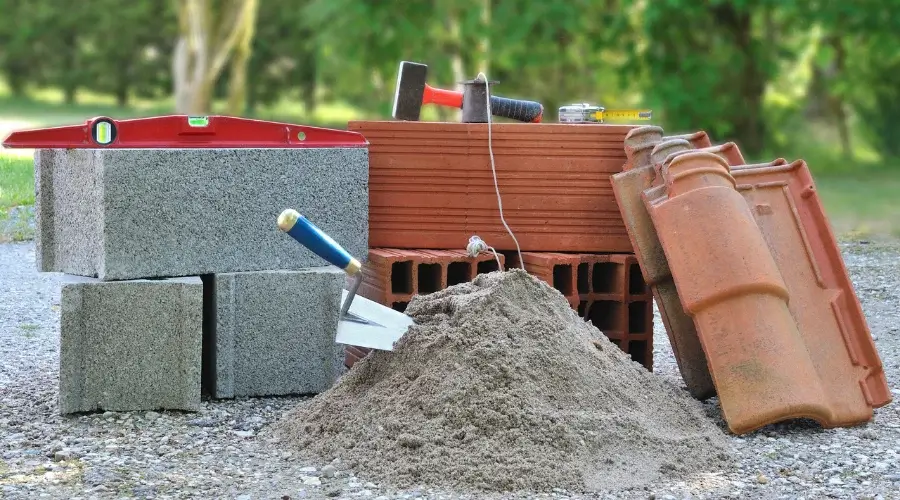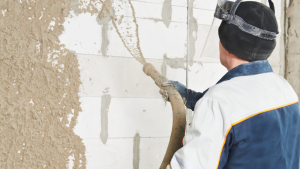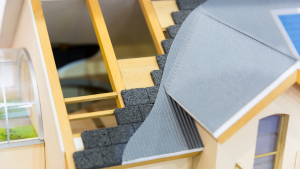Stucco, known for its durability and timeless appeal, can sometimes fall victim to wear and tear over the years. Whether it’s a small crack or a minor blemish, addressing these issues promptly is crucial to maintaining your home’s aesthetic and structural integrity. In this blog post, we’ll delve into the world of DIY stucco repair, providing you with essential tips and a step-by-step guide to help homeowners confidently tackle these repairs.
Allow us to guide you through selecting the optimal system and options tailored to suit your property. We eagerly anticipate the opportunity to meet and collaborate with you. Contact CMB East Brunswick Stucco & EIFS at (732) 631-8828.
What is DIY Stucco Repair?
DIY stucco repair involves fixing minor damages to the stucco exterior of your home without the need for professional assistance. This can include repairing cracks, chips, or minor imperfections that may develop over time due to weather conditions or natural settling.
Why DIY Stucco Repair?
Opting for a do-it-yourself approach to stucco repair not only saves you money but also empowers homeowners to take control of the maintenance of their property. By taking care of small difficulties as soon as they arise, you may save them from becoming bigger concerns that could need expensive expert assistance.
intervention.
Importance of Timely Stucco Repairs
The importance of timely stucco repairs extends beyond mere cosmetic concerns. By addressing minor issues promptly, homeowners can safeguard their property’s structural integrity, energy efficiency, and overall value while promoting a safe and aesthetically pleasing living environment. Recall that a puncture done on time saves nine. this adage holds when it comes to preserving the beauty and functionality of your home’s stucco exterior.
Prevent Structural Compromise
Minor stucco damages, if neglected, can compromise the structural integrity of your home. Stucco is a protective layer for your walls, shielding them from the elements. Addressing cracks and chips promptly prevents these issues from escalating into more significant structural problems that may compromise the stability of your home.
Avoid Energy Loss
Damaged stucco can lead to energy inefficiency, allowing air to escape and enter your home. Proper repairs help maintain the insulation properties of stucco, ensuring your home remains energy-efficient and saving you money on heating and cooling costs.
Preserve Property Value
A well-maintained exterior significantly contributes to your property’s overall value. Timely stucco repairs keep your home looking its best and protect its value in the real estate market. It is more probable that prospective purchasers will be drawn to a property with a well-maintained and aesthetically pleasing exterior.
Prevent Pest Intrusion
Small cracks and gaps in stucco can provide entry points for pests, including insects and rodents. Timely repairs act as a barrier, preventing unwanted guests from infiltrating your home and causing further damage.
Mitigate Liability
Addressing stucco issues beforehand can mitigate potential liabilities if you’re considering selling your home. Buyers and home inspectors often scrutinize the condition of the exterior, and having a well-maintained stucco surface reflects positively on the overall condition of your property.
Long-Term Cost Savings
While DIY stucco repairs may seem like a small investment of time and resources, they can lead to significant long-term cost savings. Preventing the need for major repairs or a complete stucco replacement down the line can save you thousands of dollars in maintenance expenses.
Promote a Healthy Living Environment
Damaged stucco can allow moisture to seep into your home, leading to mold growth and indoor air quality issues. Timely repairs protect the structural elements of your home and contribute to a healthier living environment for you and your family.
Tips for Successful DIY Stucco Repair
- Inspect Regularly: Conduct routine inspections to identify minor issues before they become significant problems.
- Clean the Area: Ensure the damaged area is clean and debris-free before starting the repair.
- Choose the Right Material: Select a stucco patching substance that is similar in texture and color to your existing stucco.
- Prep the Surface: Use a wire brush to remove loose material and create a rough surface for better adhesion.
- Apply a Bonding Agent: A bonding agent enhances the adhesion between the existing stucco and the patching compound.
- Work in Thin Layers: Apply the stucco patch thin layers, giving each one time to dry before adding the next.
- Feather the Edges: Blend the edges of the repair with the surrounding stucco for a seamless finish.
- Protective Gear: Wear safety gear, including gloves and safety glasses, to protect yourself during the repair process.
- Cure Properly: Follow the recommended curing time for the patching compound to ensure a durable and long-lasting repair.
- Paint Matching: If necessary, paint the repaired area to match the color of the existing stucco and achieve a uniform appearance.
Embarking on a DIY stucco repair journey can be a rewarding experience for homeowners, allowing them to preserve the beauty and integrity of their homes. By following these tips and step-by-step guides, you can confidently tackle minor stucco repairs, saving time and money. Remember, the key lies in early detection and proactive maintenance, ensuring that your home’s stucco remains a source of pride for years.




